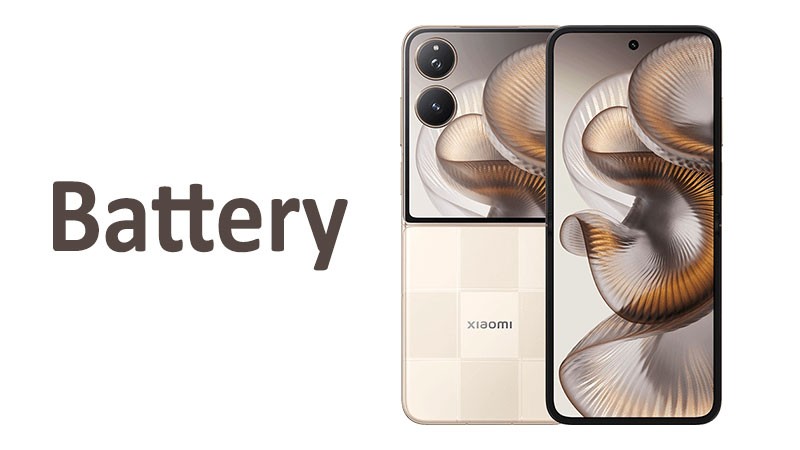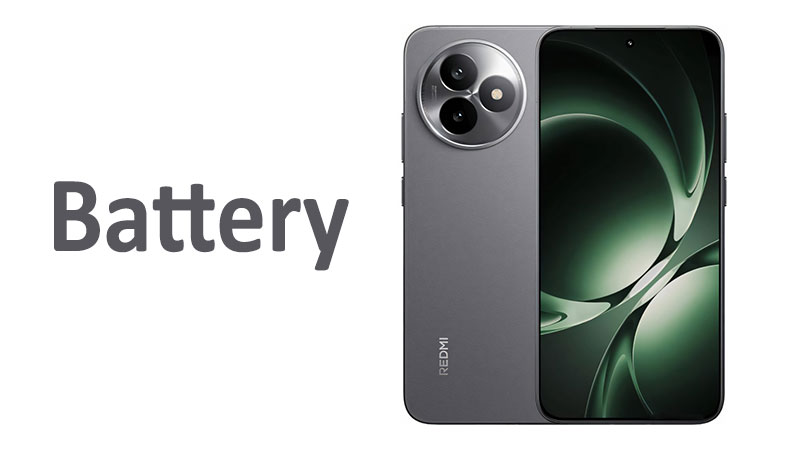The battery is the heart of any smartphone. It determines how long you can use your device without being tethered to a wall outlet. For the Apple iPhone 16, the battery is a crucial element of its overall performance and user experience. With each new generation, Apple aims to deliver more power and efficiency. This detailed article will explore the Apple iPhone 16 battery, covering its capacity, charging speed, and real-world battery life. We will also compare it to previous models and competitors to give you a complete picture.
A Detailed Look at the iPhone 16 Battery
The iPhone 16 features a Li-Ion 3561 mAh battery. This is a noticeable increase from the iPhone 15’s 3349 mAh. The bump in capacity, combined with the new A18 chip’s improved efficiency, promises a longer-lasting device. This upgrade is a direct response to consumer demand for better endurance. It is a key factor for anyone considering an upgrade.
The new A18 chip is a significant contributor to the improved battery life. Apple’s silicon is known for its power efficiency. The A18 takes this a step further with a new neural engine and performance cores. This optimization allows the iPhone 16 to handle demanding tasks with less power. The result is a more efficient device that can last longer on a single charge.
Charging Speeds: Wired, Wireless, and Reverse
The iPhone 16 offers a variety of charging options. Each method provides a different level of convenience and speed. Understanding these options is essential for a new owner.
Wired Charging
The iPhone 16 supports wired charging with USB Power Delivery 2.0. With a compatible 20W or higher adapter, it can reach 50% charge in about 30 minutes. This is a standard fast-charging feature. It is a convenient option for a quick power boost before you head out.
- Pros: Fast and efficient, widely supported by USB-C chargers.
- Cons: Requires a physical cable, which can be less convenient than wireless options.
Wireless Charging
Wireless charging on the iPhone 16 has seen a significant upgrade. It supports a variety of wireless charging standards.
- MagSafe: The iPhone 16 supports MagSafe wireless charging at a peak power level of up to 25W. This is a notable increase from the iPhone 15’s 15W MagSafe charging. To achieve this speed, you will need a new Apple MagSafe charger and a 30W or higher power adapter. This makes wireless charging almost as fast as wired charging. It is a major selling point for users who prefer the convenience of MagSafe.
- Qi2: The iPhone 16 is also compatible with the Qi2 wireless charging standard. Qi2 is an open standard that incorporates elements of MagSafe. It provides up to 15W of wireless charging. This means you can use third-party Qi2 chargers to get fast charging without needing a proprietary MagSafe charger.
- Standard Qi: The iPhone 16 also works with older Qi wireless chargers. However, the charging speed is limited to 7.5W. This is a slower option but provides a universal charging solution for many wireless pads.
Reverse Charging
The iPhone 16 introduces a long-awaited feature: reverse wired charging. This allows the phone to act as a power bank. You can use a USB-C cable to charge other devices directly from your iPhone. The reverse charging power is limited to 4.5W. This is not fast enough to charge a laptop, but it is perfect for smaller accessories.
- Use Cases: This feature is incredibly useful for charging AirPods, an Apple Watch, or even another smartphone in an emergency. It is a handy tool to have when you are on the go.
Apple iPhone 16 Battery Life in the Real World
While battery capacity and charging specs are important, real-world performance is what truly matters. The iPhone 16’s battery life is a significant improvement over its predecessor. According to Apple’s official ratings, the iPhone 16 can provide up to 22 hours of video playback and 18 hours of streamed video. This is an increase from the iPhone 15’s 20 hours of video playback and 16 hours of streaming.
The combination of a larger battery and the more efficient A18 chip delivers a noticeable boost. For an average user, this means the phone can comfortably last a full day, even with heavy usage. Power users who stream a lot of video, play graphics-intensive games, or use the camera extensively will also see a marked improvement.
Comparison with iPhone 15 and Competitors
To understand the iPhone 16’s battery performance, a comparison is essential.
iPhone 16 vs. iPhone 15
- Capacity: The iPhone 16 has a 3561 mAh battery, a 6.3% increase over the iPhone 15’s 3349 mAh. This capacity bump is key.
- Wired Charging: Both models can charge to 50% in about 30 minutes. There is no major change in wired charging speed.
- Wireless Charging: The iPhone 16’s MagSafe charging is a major upgrade. At 25W, it is significantly faster than the iPhone 15’s 15W.
- Battery Life: The iPhone 16 offers a few extra hours of video playback and streaming. The difference is noticeable in daily use.
iPhone 16 vs. Android Flagships
Many Android phones have larger battery capacities. Some models boast 5000 mAh or more. However, raw capacity does not tell the whole story. Apple’s software and hardware are tightly integrated. This optimization allows the iPhone to achieve impressive battery life with a smaller battery.
- Charging Speed: Some Android competitors offer much faster wired charging, sometimes exceeding 100W. This can fully charge a phone in under 30 minutes. Apple’s approach is more conservative. It prioritizes battery health and longevity. The 50% in 30 minutes is a good balance of speed and battery protection.
- Efficiency: The iPhone 16’s A18 chip is a powerhouse of efficiency. It often outperforms Android chips in terms of power consumption for a given task. This means the iPhone can do more with less battery.
Pros and Cons of the iPhone 16 Battery
Like any product, the iPhone 16’s battery system has its strengths and weaknesses.
Pros:
- Larger Capacity: The 3561 mAh battery is a welcome increase. It translates to longer usage times.
- Improved Efficiency: The A18 chip is highly efficient. It extends the battery life without increasing the battery size dramatically.
- Faster Wireless Charging: The 25W MagSafe charging is a huge upgrade. It makes wireless charging a viable daily option.
- Reverse Charging: The new 4.5W reverse wired charging is a great convenience feature. It is perfect for charging small accessories.
Cons:
- Wired Charging Speed: Wired charging speed is not faster than the previous model. It lags behind some Android competitors.
- No Wireless Reverse Charging: The iPhone 16 lacks the ability to wirelessly charge other devices. This is a feature found on some high-end Android phones.
- Dependence on Specific Chargers: To get the fastest MagSafe speeds, you need a specific Apple charger and a powerful adapter.
Important Points for a Buyer
If you are considering buying an iPhone 16, keep these points in mind:
- Battery Life is Excellent: The iPhone 16 offers reliable all-day battery life for most users. It is a solid choice for a new phone.
- Fast Charging Requires Investment: The phone does not come with a charging brick. You will need to purchase a 20W or higher adapter for fast wired charging. For the fastest wireless speeds, the new MagSafe charger is a must-have.
- Software Optimization Matters: The longevity of the iPhone 16 battery is not just about the hardware. iOS 18 and Apple’s battery management features play a major role. These features protect the battery’s health over time.
- Reverse Charging is Cabled: Remember that the reverse charging feature is wired. You will need to carry a USB-C to USB-C cable to use it.
Conclusion
The Apple iPhone 16 battery represents a significant step forward for the standard iPhone model. The combination of a larger 3561 mAh capacity and the highly efficient A18 chip delivers a real-world battery life that is a marked improvement over the iPhone 15. While wired charging speeds remain consistent, the jump to 25W MagSafe wireless charging is a standout feature. The addition of 4.5W reverse wired charging adds a layer of convenience for powering accessories.
For potential buyers, the iPhone 16 offers a compelling battery experience. It provides the all-day endurance that users expect from a modern flagship. The improvements in wireless charging make it a more versatile and convenient device. While it may not match some Android rivals in raw charging speed, Apple’s focus on efficiency and battery health provides a balanced and reliable solution. The iPhone 16’s battery system is a key reason why it is a top contender in the smartphone market.
FAQ
The iPhone 16 has a battery capacity of 3561 mAh.
With a 20W or higher USB-C power adapter, the iPhone 16 can charge up to 50% in about 30 minutes.
Yes, the iPhone 16 supports MagSafe wireless charging up to 25W, which is a significant increase from previous models.
Yes, the iPhone 16 supports 4.5W reverse wired charging, allowing you to power other devices like AirPods or a second phone.
The iPhone 16 offers improved battery life due to its larger capacity and more efficient A18 chip. It provides more hours of video playback and streaming.



